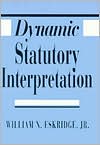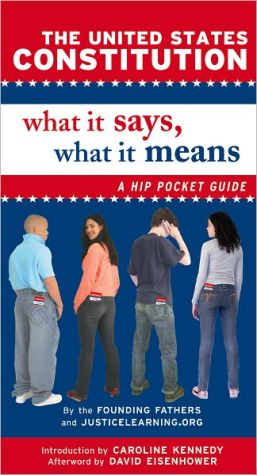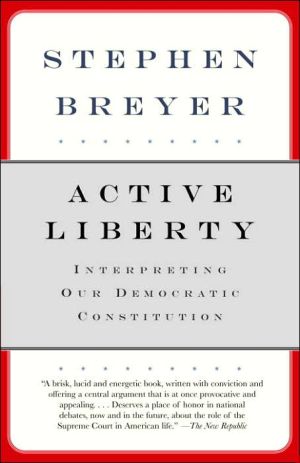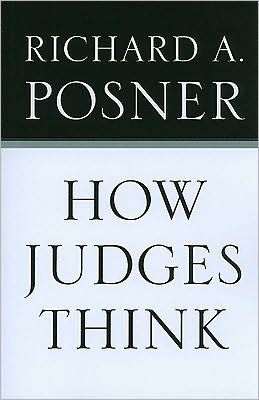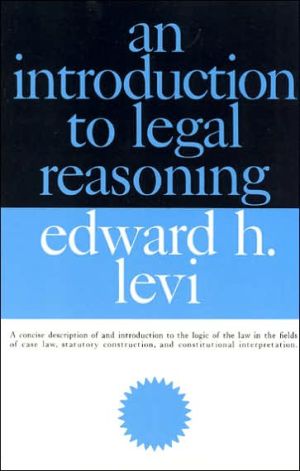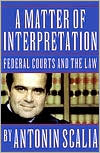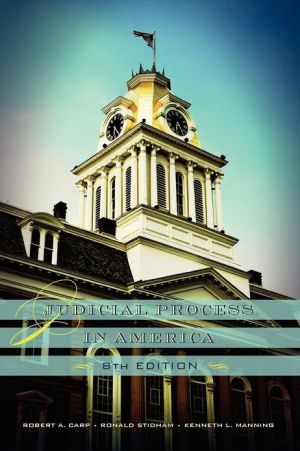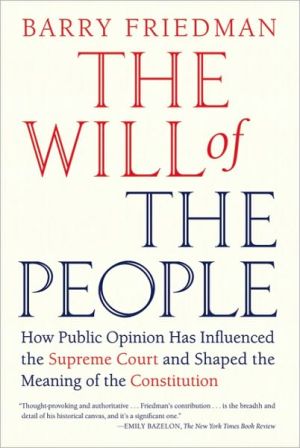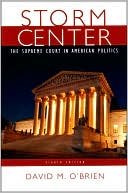Dynamic Statutory Interpretation
Contrary to traditional theories of statutory interpretation, which ground statutes in the original legislative text or intent, legal scholar William Eskridge argues that statutory interpretation changes in response to new political alignments, new interpreters, and new ideologies. It does so, first of all, because it involves richer authoritative texts than does either common law or constitutional interpretation: statutes are often complex and have a detailed legislative history. Second,...
Search in google:
Contrary to traditional theories of statutory interpretation, which ground statutes in the original legislative text or intent, legal scholar William Eskridge argues that statutory interpretation changes in response to new political alignments, new interpreters, and new ideologies. It does so, first of all, because it involves richer authoritative texts than does either common law or constitutional interpretation: statutes are often complex and have a detailed legislative history. Second, Congress can, and often does, rewrite statutes when it disagrees with their interpretations; and agencies and courts attend to current as well as historical congressional preferences when they interpret statutes. Third, since statutory interpretation is as much agency-centered as judgecentered and since agency executives see their creativity as more legitimate than judges see theirs, statutory interpretation in the modern regulatory state is particularly dynamic.Eskridge also considers how different normative theories of jurisprudence—liberal, legal process, and antiliberal—inform debates about statutory interpretation. He explores what theory of statutory interpretation—if any—is required by the rule of law or by democratic theory. Finally, he provides an analytical and jurisprudential history of important debates on statutory interpretation. Booknews Contrary to traditional theories of statutory interpretation, which ground statutes in the original legislative text or intent, Eskridge (law, Georgetown Law Center) argues that statutory interpretation changes in response to new political alignments, new interpreters, and new ideologies. He also considers how different normative theories of jurisprudence inform debates about statutory interpretation, explores what theory of statutory interpretation--if any--is required by democratic theory, and provides an analytical and jurisprudential history of important debates on statutory interpretation. Annotation c. Book News, Inc., Portland, OR (booknews.com)
AcknowledgmentsIntroduction: Why Statutory Interpretation Is Worth a Book1IThe Practice of Dynamic Statutory Interpretation91The Insufficiency of Statutory Archaeology132The Dynamics of Statutory Interpretation483A Case Study: Labor Injunction Decisions, 1877-193881IIJurisprudential Theories for Reading Statutes Dynamically1074Liberal Theories1115Legal Process Theories1416Normativist Theories174IIIDoctrinal Implications of Dynamic Statutory Jurisprudence2057Legislative History Values2078Vertical versus Horizontal Coherence2399Canons of Statutory Construction as Interpretive Regimes275Appendix 1 The Primary Legislative Inaction Precedents, 1962-1992309Appendix 2 Supreme Court Decisions Overruling Statutory Precedents, 1962-1992316Appendix 3 The Rehnquist Court's Canons of Statutory Construction323Notes335Index429
\ BooknewsContrary to traditional theories of statutory interpretation, which ground statutes in the original legislative text or intent, Eskridge (law, Georgetown Law Center) argues that statutory interpretation changes in response to new political alignments, new interpreters, and new ideologies. He also considers how different normative theories of jurisprudence inform debates about statutory interpretation, explores what theory of statutory interpretation--if any--is required by democratic theory, and provides an analytical and jurisprudential history of important debates on statutory interpretation. Annotation c. Book News, Inc., Portland, OR (booknews.com)\ \ \ \ \ Beth M. HenschenIn DYNAMIC STATUTORY INTERPRETATION, William Eskridge wastes no time in delineating why statutory interpretation is important, reminding us that statutory interpretation has a venerable jurisprudential history, and introducing the thesis that statutory interpretation is dynamic. It is also clear from the beginning that the reader is in for a treat. This book is not about "canons of construction," though in the last chapter Eskridge does discuss the Supreme Court's recent experimentation with the canons and argues that understanding its use of the canons is important for understanding the multiplex agenda of the Rehnquist Court. Nor is this a theoretical tome, though one of the major aims of the book is to address the legitimacy of reading statutes dynamically by viewing the process through different jurisprudential traditions. Rather, Eskridge takes a, well, DYNAMIC, approach to the task of criticizing certain modes of interpretation, such as originalist theories, and advancing the argument that dynamic statutory interpretation is inevitable because of the structure of policy-making in the United States. He utilizes several key cases to lead us through the range of theoretical and practical issues that are involved in the way that courts and agencies interpret legislative enactments, confronting us with the same difficulties that judges and bureaucrats face as they bring meaning to statutory language and seek to uncover legislative intent. Make no mistake about it. DYNAMIC STATUTORY INTERPRETATION is not an easy read. One has to pay close attention on this intellectually engaging trip. The road map is marked with historical and theoretical points of interest that must be toured in order to get the most out of the journey. Still, Eskridge is ever-mindful of the practical realities and pragmatic consequences of statutory interpretation, and he is adept at teasing out the implications of reading statutes dynamically in light of different theoretical assumptions. In chapter one, Eskridge uses the Supreme Court's 1979 decision in UNITED STEELWORKERS v. WEBER, as well as some other cases, to illustrate that when courts and agencies interpret statutes, they are not simply engaging in archaeology. While interpreters are interested in the text of the statute and in the intentions of the enacting coalition, they are also concerned with the facts and equities of the case, precedents and legislative feedback, and the consequences of choosing one interpretation over another. Courts and agencies are pressed from below -- by private parties, interest groups, and ground-level implementers -- to interpret statutes in ways that are responsive to new facts, new needs, new ideas. Courts and agencies are also pressed from above -- by legislative committees, by the threat of congressional override, and by the president -- to interpret statutes in ways that are sensitive to current rather than historical political preferences. Chapter two relies on examples from civil rights and immigration law to explore the ways in which different practical, cultural, and political perspectives drive statutory interpretation in dynamic directions. Page 196 follows: Chapter three's case study of the labor injunction decisions provides further evidence that the interpretation of statutes is not a static exercise. But as Eskridge appropriately points out, it is not enough to say that courts and agencies interpret statutes dynamically (indeed, it would be difficult to argue that they do not). There are also normative questions that could -- and should -- be addressed. Is it a good thing that courts and agencies interpret statutes dynamically? Is dynamic interpretation consistent with the rule of law? With democratic theory? With justice? In chapters four, five, and six, Eskridge evaluates the desirability of dynamic statutory interpretation from the perspectives of liberal theory, legal process theory, and several normativist theories, weaving agency and court interpretations in specific cases throughout. While Eskridge contends that dynamic statutory interpretation is defensible under any of these theories (though particular interpretations are open to criticism), he concludes that critical pragmatism is the normative political theory he finds most congenial for dynamic interpretation. The final chapters of the book center around doctrinal debates that have characterized statutory practice. Chapter seven traces the ebb and flow of the value that has been placed on legislative history as a means of determining legislative meaning. Chapter eight examines the legislative inaction doctrines and the presumption of correctness for statutory precedents. Chapter nine reviews the canons of statutory construction. As is the case with the earlier chapters, these issues are dealt with in the context of specific cases and in light of real consequences. The book concludes with useful appendices: the primary legislative inaction precedents, 1962-1992; Supreme Court decisions overruling statutory precedents, 1962-1992; and the Rehnquist Court's canons of statutory construction. "Statutory interpretation is the Cinderella of legal scholarship. Once scorned and neglected, confined to the kitchen, it now dances in the ballroom." (p. 1) With that, Eskridge begins his comprehensive account, his thought-provoking analysis, his fascinating synthesis of the arguments and issues surrounding statutory interpretation. And while I must admit that my interest in the interpretation of statutes pre-dates Cinderella's good fortune in finally getting her due, I think Eskridge has written a book that nearly everyone with an interest in the complexity of public policy-making will find engaging, and all will find worthwhile.\ \
